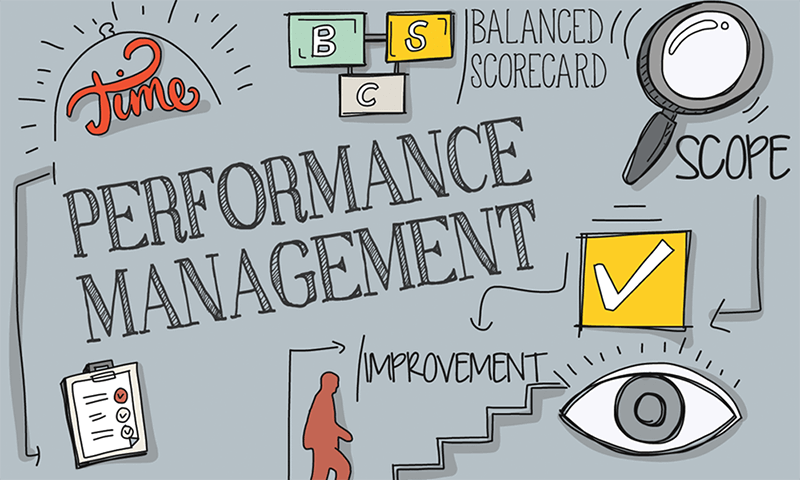In today’s fast-evolving business landscape, companies that prioritize performance management create environments where employees can thrive. By building a high-performance culture, businesses are able to achieve their goals more effectively, retain top talent, and ensure continuous growth. However, traditional performance management systems often fail to deliver the desired outcomes, which is why more organizations are turning to modern performance management software to elevate their approach.
In this article, we’ll explore how companies can build a high-performance culture through effective performance management strategies, supported by the right technology.
What is Performance Management?
Performance management is the process of continuously assessing and improving employee performance in alignment with organizational goals. It includes setting clear expectations, providing regular feedback, coaching employees, and measuring their contributions to the company’s success. When done well, performance management helps employees understand how their work contributes to the bigger picture, fosters engagement, and promotes accountability.
The Shift from Traditional to Continuous Performance Management
Traditional performance management systems—typically centered around annual performance reviews—have proven to be ineffective in today’s dynamic work environment. Annual reviews often focus on past performance rather than helping employees improve in real time. Additionally, they fail to offer frequent feedback, which is necessary for continuous learning and development.
In contrast, continuous performance management emphasizes ongoing feedback, regular check-ins, and real-time performance tracking. This approach allows managers to address issues immediately, recognize achievements promptly, and provide employees with the support they need to grow.
The Role of Performance Management Software in Building a High-Performance Culture
Implementing continuous performance management can be a complex process, but performance management software streamlines it by providing the necessary tools to facilitate and track ongoing conversations. Performance management software enhances transparency, accountability, and efficiency by automating tasks such as goal setting, feedback collection, and performance reviews.
Here are some of the key features of performance management software and how they can help build a high-performance culture:
1. Goal Setting and Alignment
Performance management software enables organizations to set clear and measurable goals at both individual and team levels. By aligning these goals with the company’s overall strategy, employees can see how their work directly contributes to the business’s success. When employees understand their role in achieving key objectives, they are more likely to stay motivated and focused.
Example: A sales team using performance management software can set goals around increasing revenue by a specific percentage. Each team member can set personal sales targets that align with this broader company objective, ensuring everyone is working toward the same outcome.
2. Continuous Feedback and Coaching
Regular feedback is critical for improving performance and driving development. Performance management software allows managers to provide continuous feedback to employees, enabling them to course-correct and improve their performance throughout the year rather than waiting for an annual review.
Real-time feedback tools within the software allow managers to acknowledge employees’ accomplishments as they happen, increasing employee engagement and motivation. Additionally, it creates a coaching environment where employees feel supported and empowered to reach their full potential.
Example: After a successful client presentation, a manager can quickly log into the software to provide immediate feedback, reinforcing positive behavior. Alternatively, if a team member is struggling with a particular task, the manager can use the system to schedule a coaching session to address the issue before it escalates.
3. Performance Reviews with Data-Driven Insights
Performance reviews are still an important part of performance management, but instead of relying solely on subjective opinions, performance management software enables managers to make data-driven decisions. The software collects data on key performance metrics, such as goal achievement, project contributions, and peer feedback, providing a holistic view of an employee’s performance over time.
By leveraging this data, managers can conduct more objective and meaningful performance reviews, highlighting both strengths and areas for improvement. Data-driven insights also help ensure that decisions related to promotions, raises, and development opportunities are fair and based on actual performance.
Example: A marketing manager can use performance management software to track how many leads each team member has generated over the quarter, alongside peer feedback on teamwork and collaboration. This data can be used to provide balanced and constructive performance reviews.
4. Employee Development and Learning Opportunities
Building a high-performance culture is not just about evaluating employees’ past performance—it’s also about providing opportunities for growth. Performance management software often includes tools for identifying development needs and creating personalized learning plans. Managers can use these tools to support employees in developing the skills they need to succeed in their current role or prepare for future positions.
By incorporating employee development into the performance management process, companies can show their commitment to helping employees grow, which in turn fosters loyalty and retention.
Example: After a performance review, a manager identifies that an employee could benefit from leadership training. The performance management software allows the manager to assign relevant courses or workshops and track the employee’s progress toward completing them.
5. Encouraging Peer Recognition and Collaboration
A high-performance culture is not just driven by top-down feedback from managers but also by peer recognition and collaboration. Many performance management software platforms include peer feedback features that allow employees to recognize their colleagues’ efforts and contributions.
Peer recognition helps build a positive work environment where employees feel appreciated by their colleagues, strengthening team dynamics and fostering a sense of belonging. Additionally, collaborative goal-setting features ensure that employees work together towards shared objectives, further driving performance.
Example: A project manager who witnessed a team member go above and beyond can use the software to send a peer recognition note, which can be publicly shared with the team to celebrate the achievement.
Best Practices for Implementing Performance Management Software
To maximize the effectiveness of performance management software, it’s important to follow best practices for implementation:
- Get Buy-In from Leadership: For performance management software to be successful, it must have the support of company leadership. Executives should champion its use and communicate its benefits to the organization.
- Train Managers and Employees: Proper training is essential to ensure managers and employees know how to use the software effectively. This includes setting goals, providing feedback, and leveraging the software’s features to track performance.
- Foster a Culture of Continuous Feedback: Encourage managers and employees to embrace continuous feedback as a core part of their daily work routine. The more frequently feedback is given, the more valuable it becomes in driving performance improvement.
- Regularly Review and Adjust Goals: Goals should not be static. Performance management software makes it easy to adjust objectives and key results based on changing business conditions or priorities, ensuring employees remain aligned with the company’s strategy.
Conclusion
Building a high-performance culture is a long-term commitment, but by adopting continuous performance management practices and using the right performance management software, organizations can create an environment where employees feel supported, engaged, and motivated to succeed.
Performance management software simplifies the process of setting goals, tracking performance, providing feedback, and fostering collaboration, ensuring that every team member is contributing to the company’s success. As more companies recognize the importance of creating a high-performance culture, investing in the right performance management tools will be key to staying competitive and achieving long-term growth.





